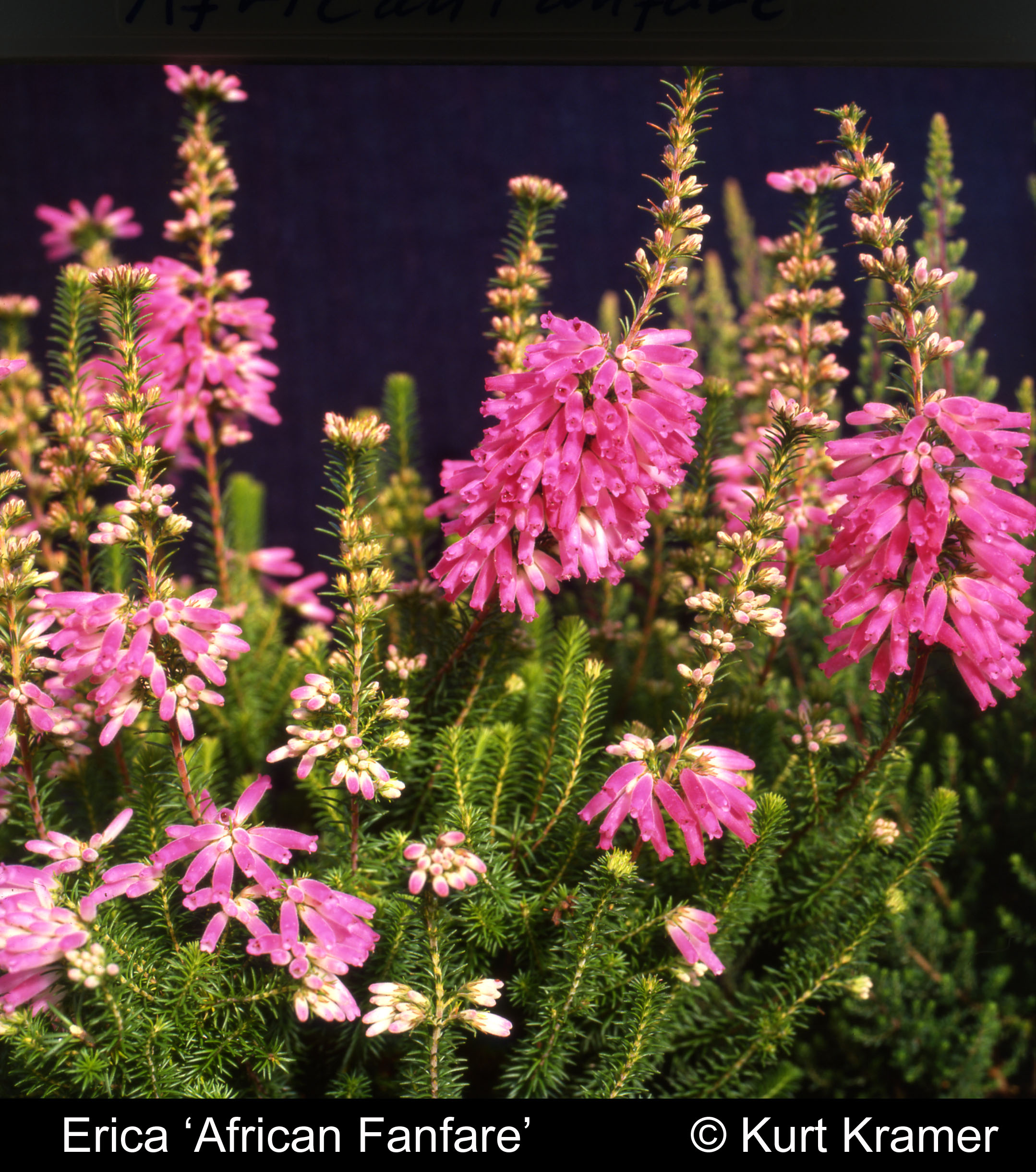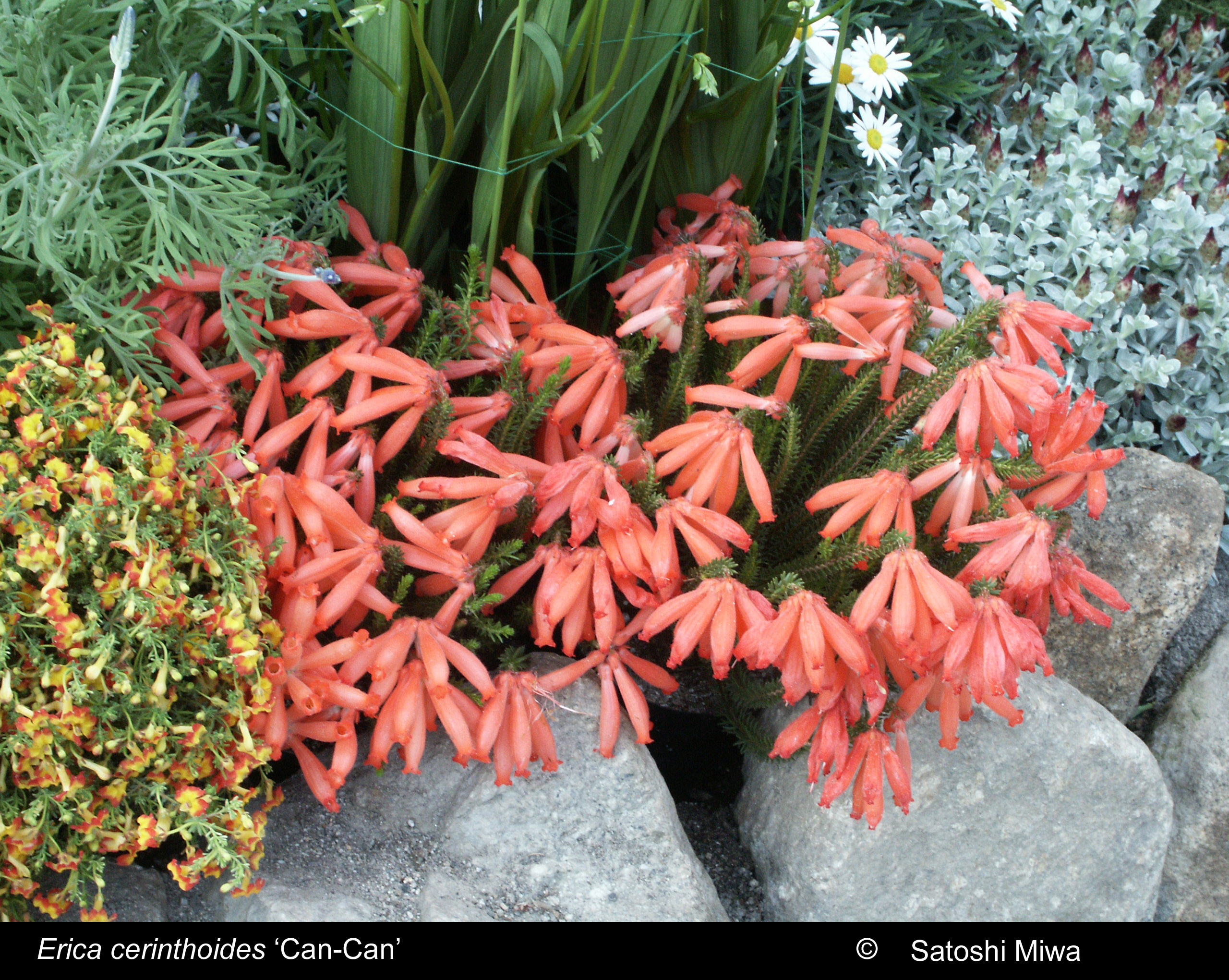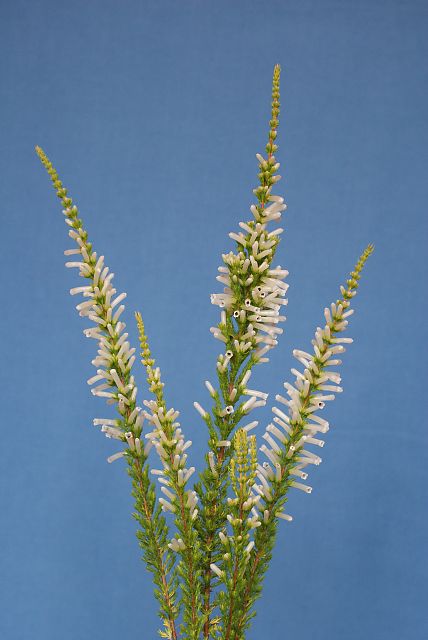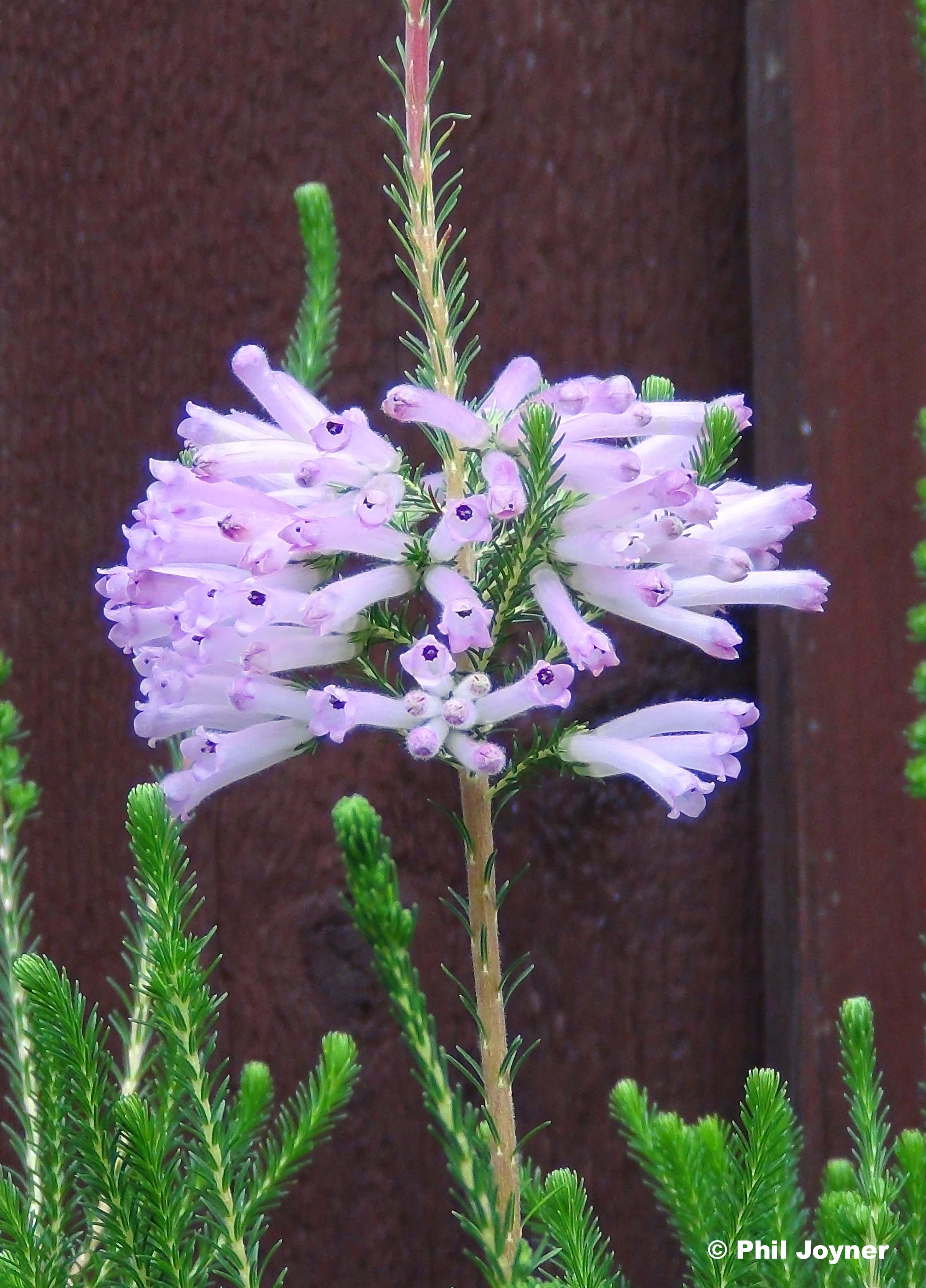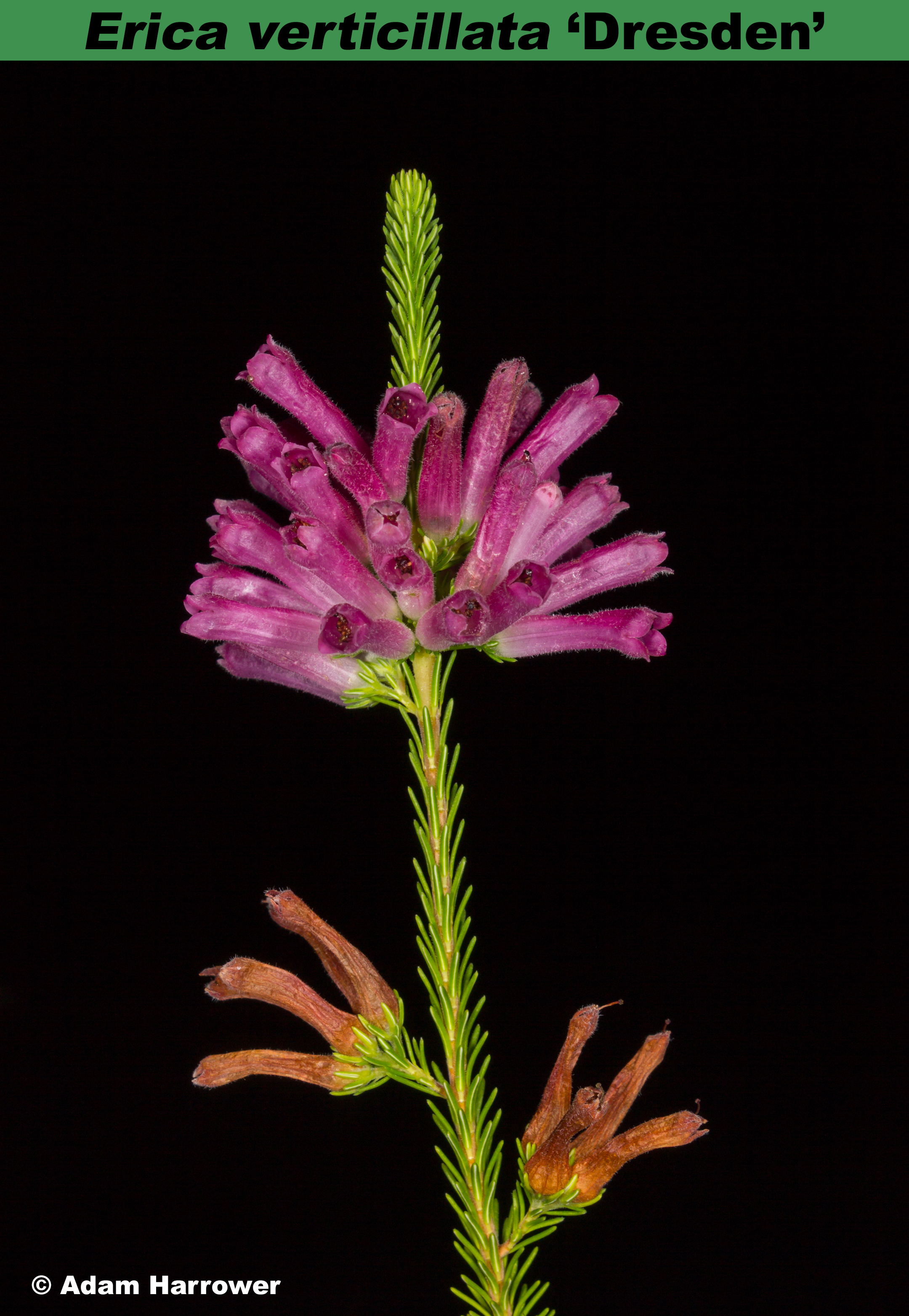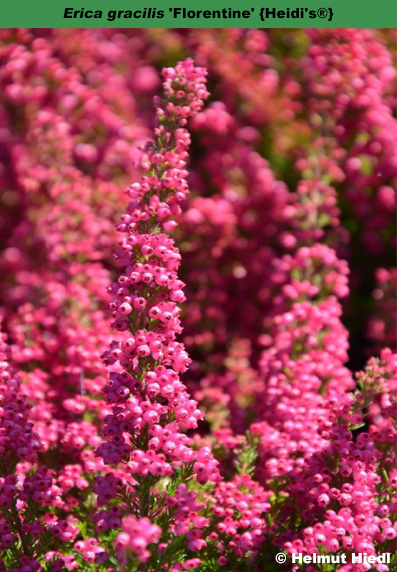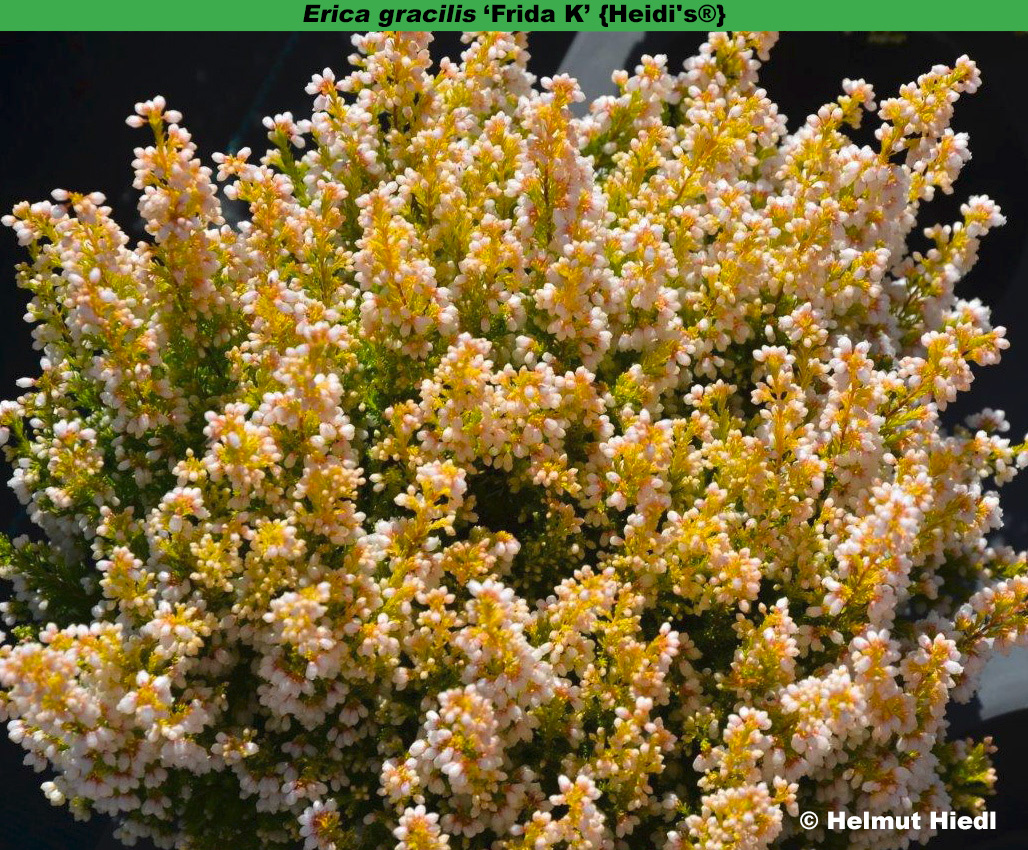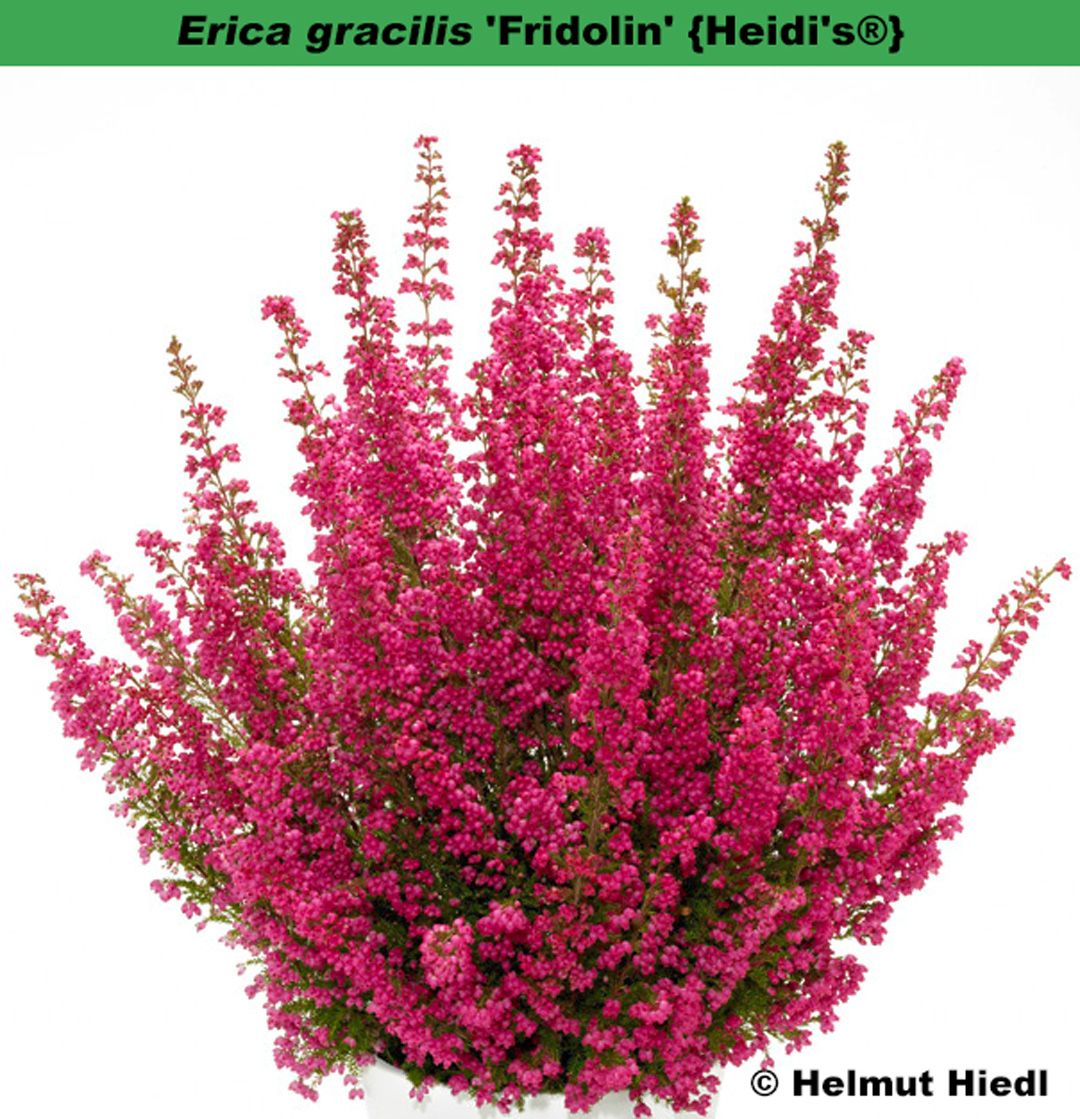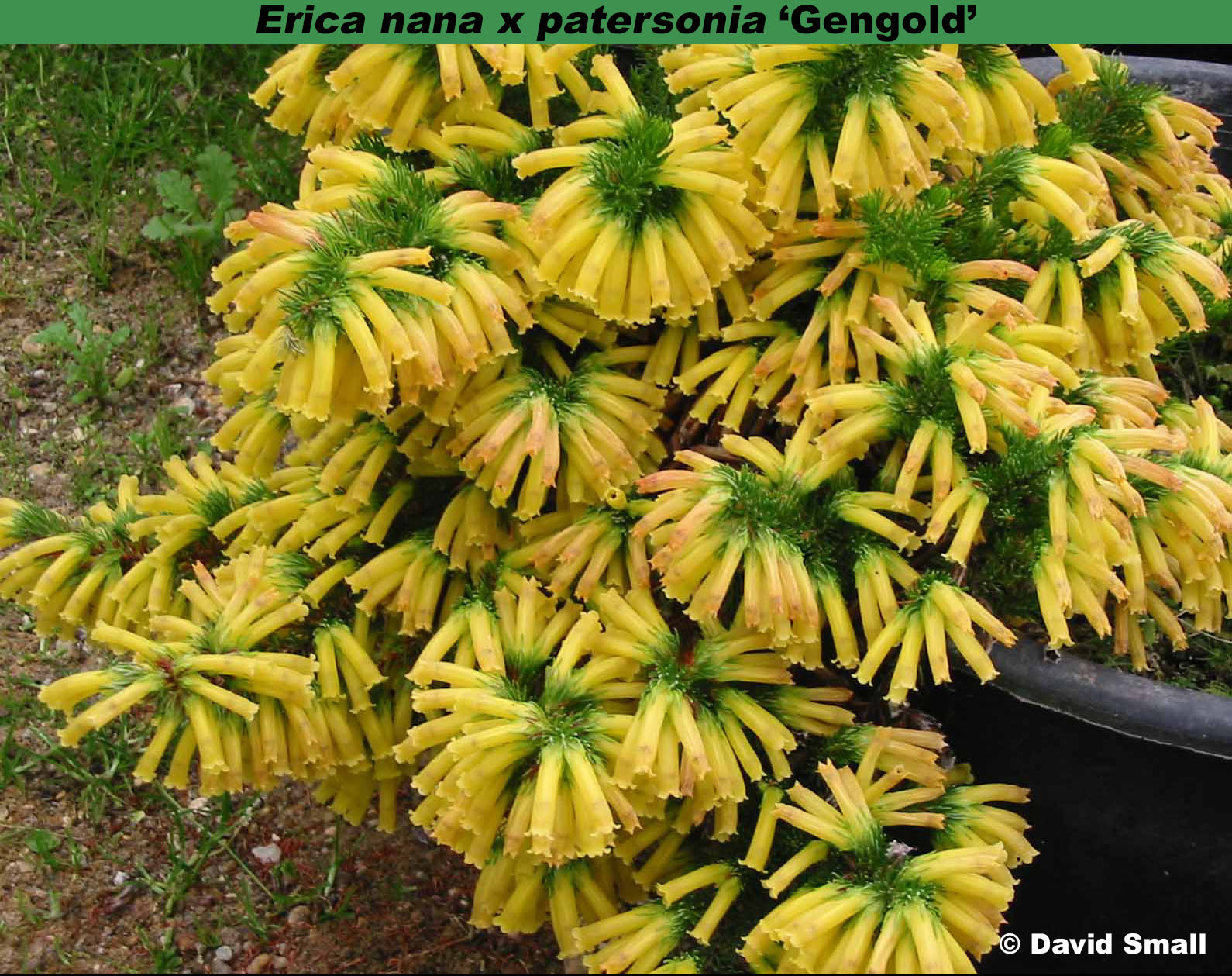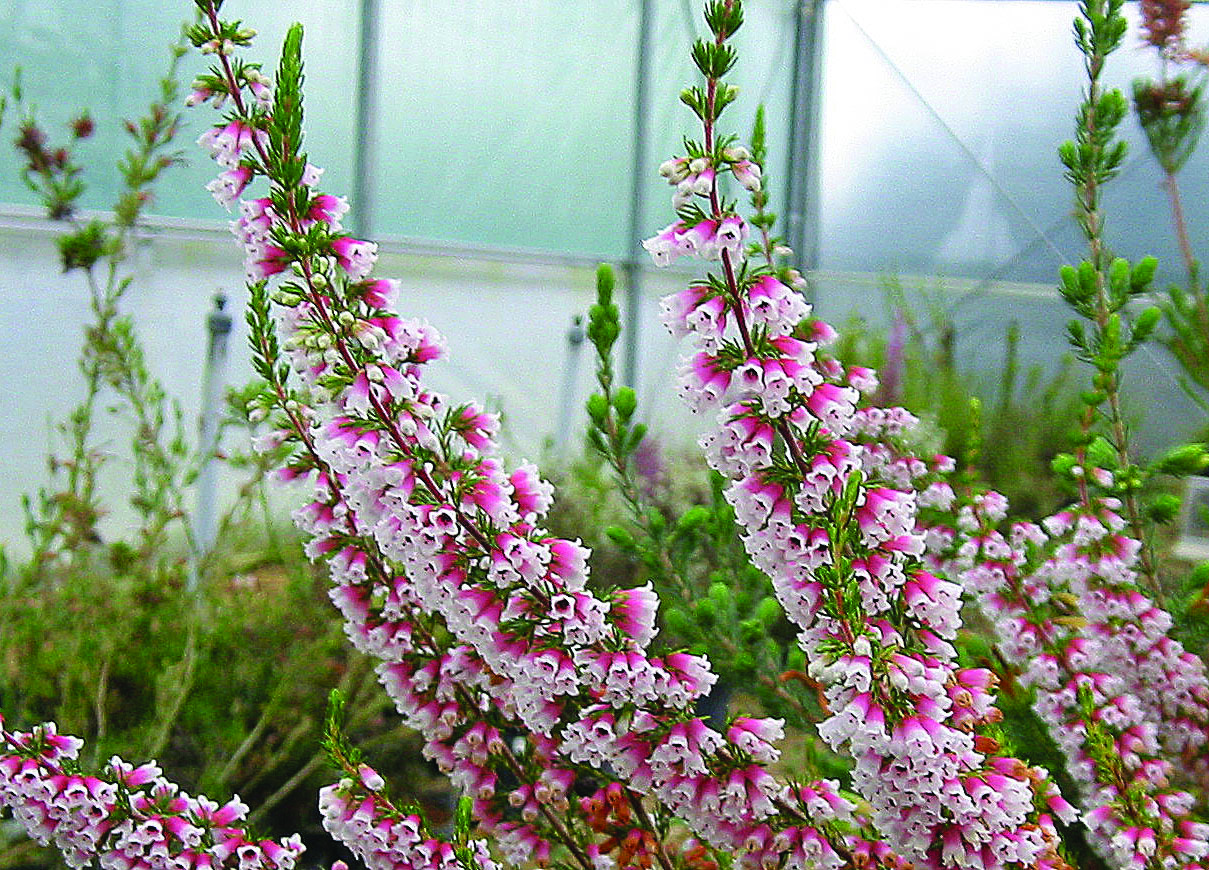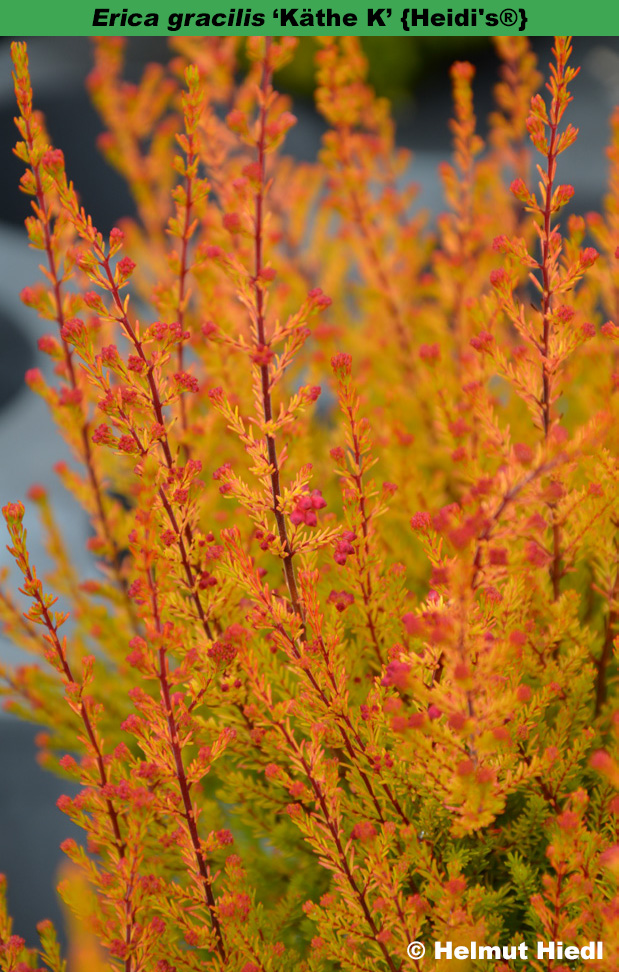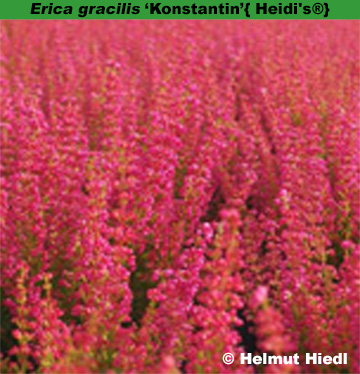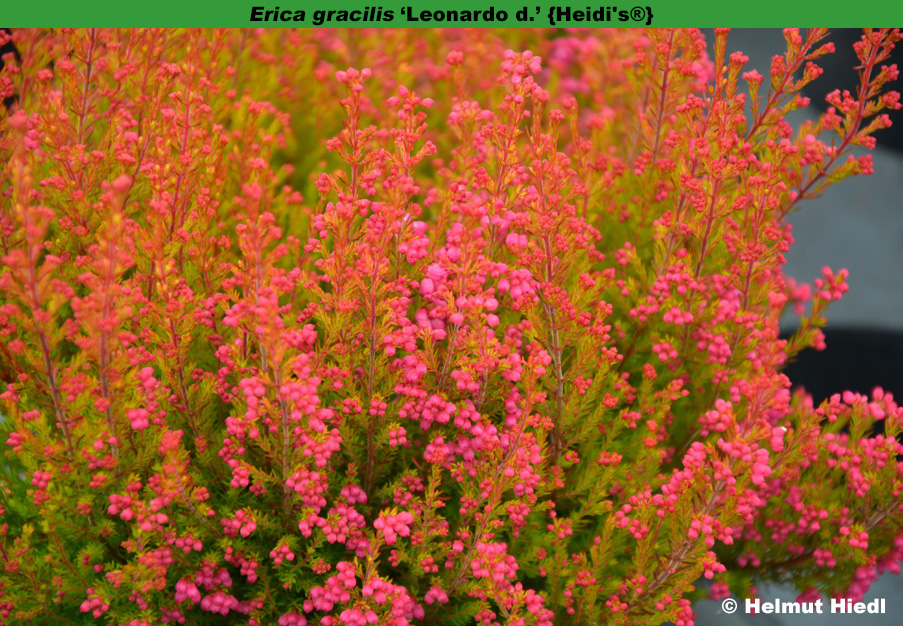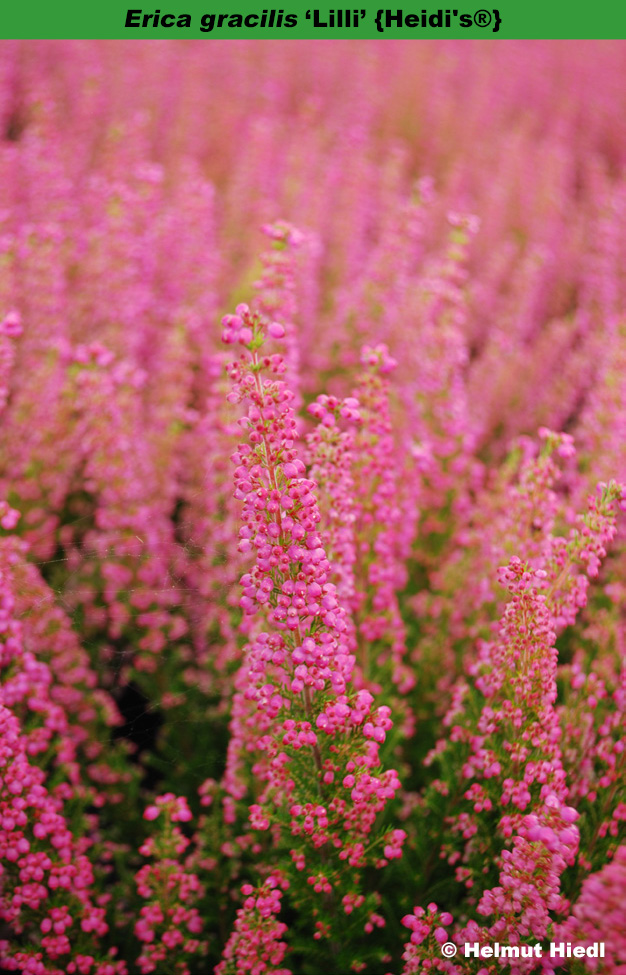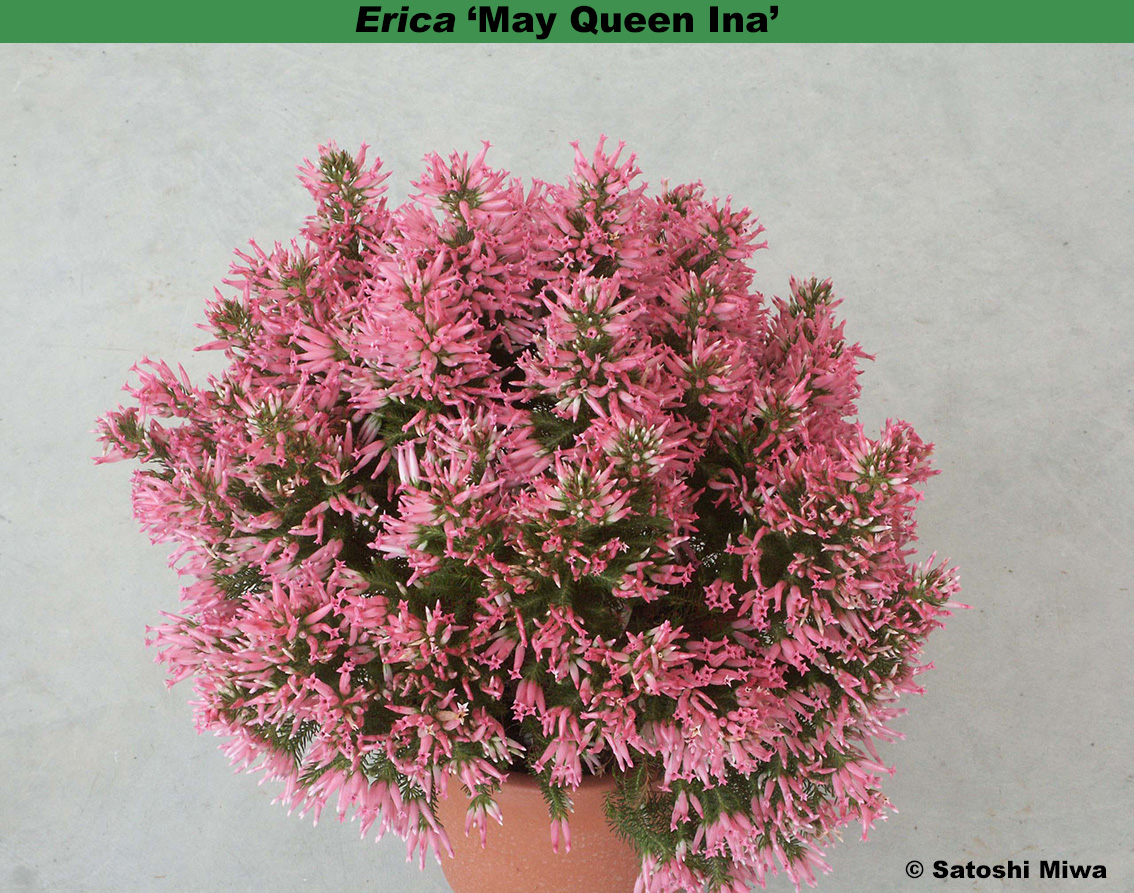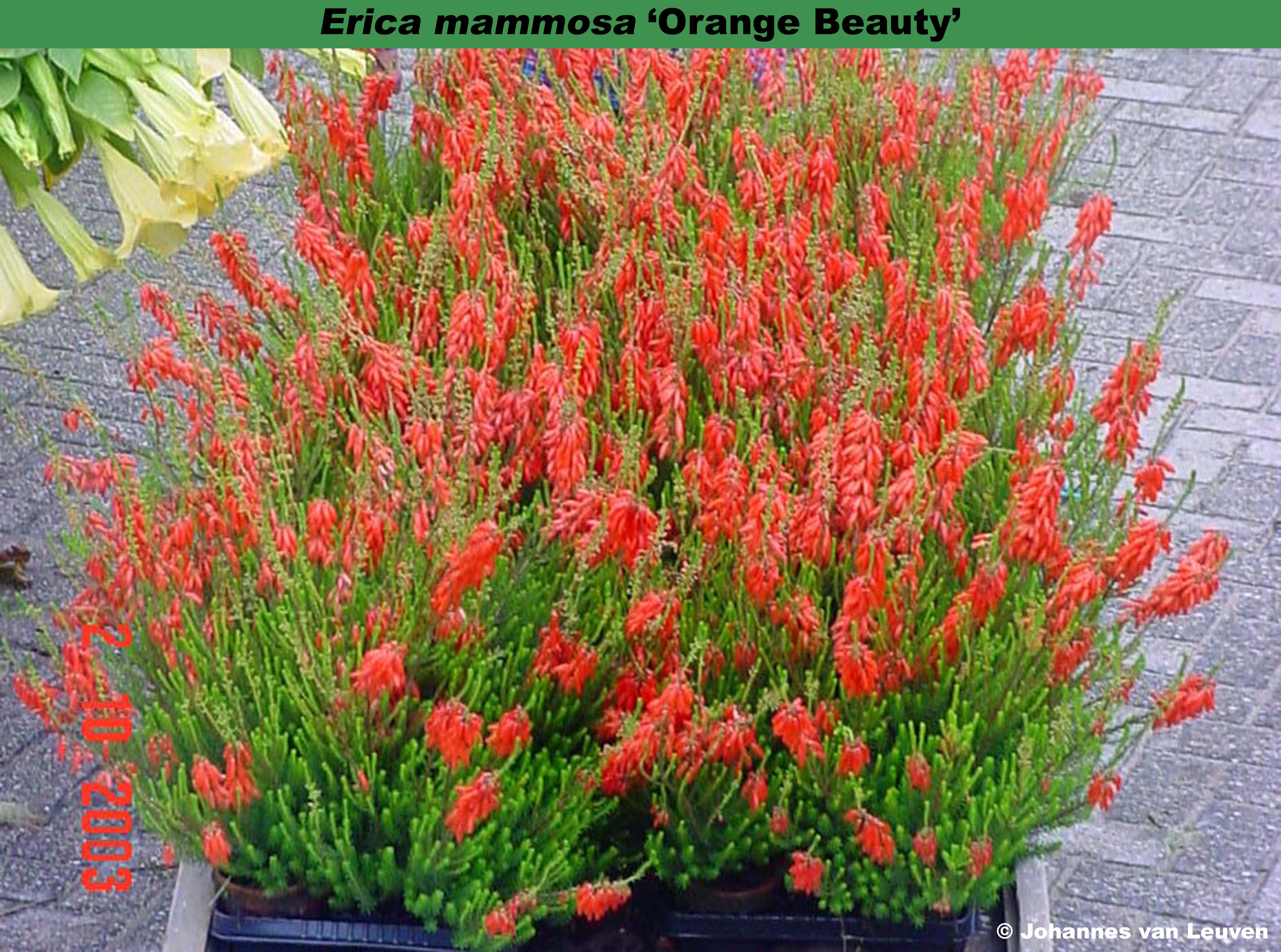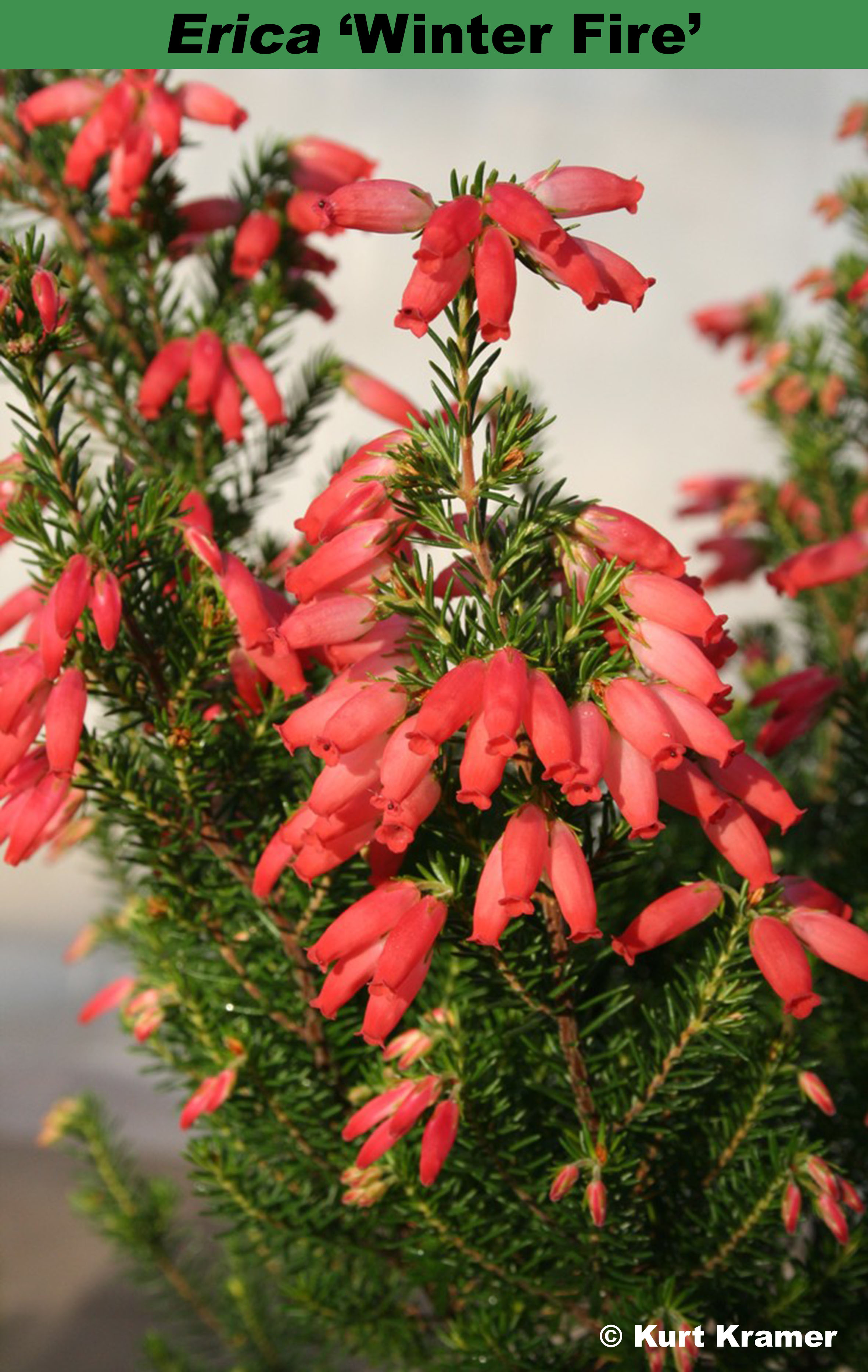Bushy, medium-sized shrub, to average height of 1.4–1.6m, old specimens to 2.0m; 0.7–1.0m broad. Flowers dark pink, tubular, 20mm long, 4mm diameter; arranged in terminal, 4- or 5-flowered (rarely 3- or 6-flowered) umbels, on very short lateral branches arranged in whorls. Synflorescences spike-like, not neat, each with up to 6 whorls of flowering branches on strong, erect, main branches; terminal apex of the stem continuing growth. Non-flowering lateral branches on the main flowering stems to 3cm long, arranged in whorls of 6. Foliage green, leaves to 5mm long, appearing crowded. Viable seed produced. Smaller and bushier than ‘African Phoenix’ with less orderly synflorescences; overall thicker, heavier and bushier in appearance.
Origins: accession number 273/12; propagated from what was apparently one large, old specimen growing in a forest clearing behind the braille trail at Kirstenbosch believed to be a remnant from an early collection, possibly the one made for Kirstenboch by Mrs Bolus in 1917. Progeny had pale and dark pink flowers: the paler clone is ‘Louisa Bolus’.
It was rediscovered by Senior Foreman Adonis Adonis in 1990.
Being of South African origin the plant is not regarded as hardy in the UK and is preferably grown in a pot, using ericaceous compost, and brought into a frost free, light and airy environment during the winter months.
® E.2012:06 registered by Anthony Hitchcock, Nursery, Plant Collections & Threatened Species Program Manager Kirstenbosch National Botanic Garden.

